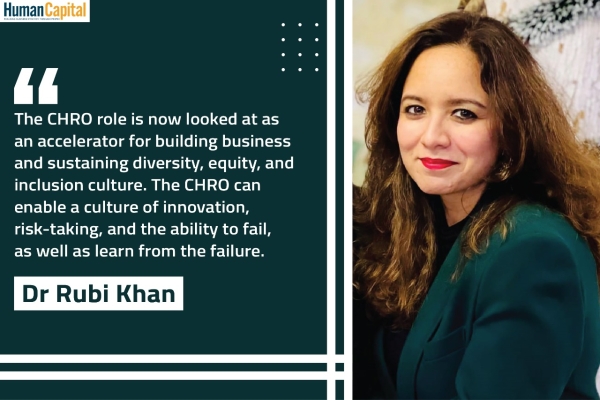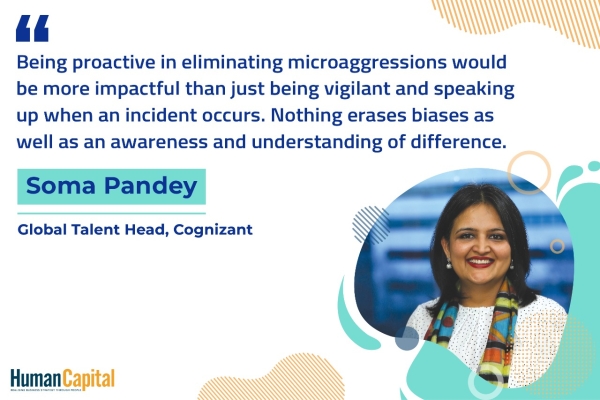Regular employee connects and periodic touchpoints are the most valued gestures from the leaders during these days of social distancing.
A question that is gradually snowballing into a concern for people leaders today is the means of driving engagement among a workforce that is either fully remote or on a hybrid mode. In other words, what are the imperatives for leaders to enable, foster, organise, and galvanise employee capabilities in the next normal?
Intuitive workplaces that understand employee environments, moods, wants, and needs, perhaps have the potential answers. Employers who are paying attention to these employee overtones may have not only found the answer to this question, but are also investing towards rich dividends in the future. Actions considered as transactional and routine in nature are coming forth as transformational for people.
Timeshare And Mindshare
A leader’s timeshare and mindshare, and thus collectively, that of the employer is seen to be valued more by the employees than the value of the company’s shares itself in these troubled times. The feeling that organisations can generate in the minds of people of being cared for, concerned and compassionate is seen to have a far-reaching and deeper impact and greater bonding than any other rewards or awards. The secret code and solution to drive engagement in the workplace post pandemic is being decoded; it lies in simple and basic things. Organisations that have re-oriented themselves in these lines and set directions already have an advantage in the overall talent management, more specifically in attracting and retaining.
Today, more than ever, Employee Engagement is alleged to be elusive, confusing, and limited by one’s imagination in many ways. The word ‘Engagement’ has been one of those overused in the corporate world and in the people domain that, it seems to be losing its specificity to make any practical sense. Leadership talks are deemed vacuous and non-leaderlike if one has not had the word ‘engagement’ used at least a few times in any session. However, even among the most competent and accomplished Human Resources leaders, there is no collective consensus as to what the core of employee engagement is, and what can strike a code with the employees. That is not because of any lack of learning or workplace insights, rather it is because the employee life situations, workplace definitions and employee priorities are changing at a rapid pace in recent times. These changes by far could be seen as the fastest, biggest and universal with their impact on the culture, philosophies, and the workplace fabric itself.
What Comes Next?
People leaders and Human Resources practitioners who are thinking hard as to what comes next in engagement may pause and ponder on the magnificence of focusing on the necessities among human needs. These may not appear to be profoundly strategic from a corporate perspective or astutely tactical for people practitioners, however, in my opinion, they can be enormously meaningful for the employees. The constituent elements of these elementary needs can be unambiguously the same and common across, however, their intensity can be different for different workplaces and that should be a subject imagination for individual practitioners.
One would be surprised if the employee definition of these basics goes beyond the need for being listened to, responded to and attended to. Any attempt to impress employees through initiatives said to be life-changing and disruptive can be seen as outlandish and alien at least in these times. Any stab at classifying any of the initiatives towards engagement as long-term and transformational can also sound bizarre to people in today’s context. The invitation herein is not to redefine anything, but to redirect and refocus in the near term at least, on alltime fundamentals as priorities today.
The most reassuring thing about these new nuances of engagement is that it brings the focus back on the first level need in Maslow’s hierarchy of needs, a theory of motivation which states that five categories of human needs dictate an individual’s behaviour. Those needs are physiological needs, safety needs, love and belonging needs, esteem needs, and self-actualisation needs.
Making A Jump Start
Organisations that focus on aspects of well-being, that includes psychological safety, perhaps have got it right and have made a jump start in the real sense. Organisations that managed to get their employee engagement formula right, were able to reinvent their employee experience in a short time span. They experienced a significant increase in their engagement and employee experience scores in the recent Great Place To Work Survey in 2021.
If, as a people leader, one continues to have challenges with engagement, it may be that you are doing everything right, but the prerequisites are being overlooked. If you are busy formulating people strategies for the year or revising your people focus initiatives, you may like to go back to the basics and keep it simple, to make it impactful. Focus on these core and foundational things can generate a large amount of goodwill and loyalty. The need for leaders to exhibit empathy, compassion, provide flexibility and accept vulnerability is more relevant now than ever before. To be an effective leader and people practitioner in these changing times, you need to become socially aware, culturally intelligent, emotionally connected and practice the art of authentic leadership being full of human values and personal convictions.
Regular employee connects and periodic touch points are the most valued gestures from the leaders during these days of social distancing. Leaders who practiced and put to use these simple gears have had better engagement and more productivity as we read from various sources.

Has COVID-19 forever changed the way we live and work?
Trending
-
SBI General Insurance Launches Digital Health Campaign
-
CredR Rolls Out 'Life Happens' Leave For Its Employees
-
Meesho Announces 30-Week Gender-Neutral Parental Leave Policy
-
Microsoft Unveils Tech Resilience Curriculum To Foster An Inclusive Future
-
60% Indian Professionals Looking For Job Change Due To COVID: Survey
-
SpringPeople And Siemens Collaborate For Digital Transformation Push
-
86% Professionals Believe Hybrid Work Is Essential For Work Life Balance: Report
-
Almost 1 In Every 3 People's Personal Life Affected Due To Work Stress
-
Meesho Rolls Out Reset And Recharge Policy For Employees
-
80% Of Talent Leaders & Academics Say Pandemic Changed Skill Needs For Youth: Report
-
Hero Electric Rolls Out 'Hero Care' Program For Employees
-
Human Capital In Collaboration With ASSOCHAM Hosts Virtual Conference
-
IKEA India, Tata STRIVE Collaborate To Create Employability And Entrepreneurship Opportunities
-
SAP India, Microsoft Launch Tech Skilling Program for Young Women
-
DXC Technology, NASSCOM Collaborate For Employability Skills Program
-
Lenskart To Hire Over 2000 Employees Across India By 2022
-
Mindtree Launches Learn-and-Earn Program
-
Tata AIA Extends 'Raksha Ka Teeka' To Its Employees
-
Swadesh Behera Is The New CPO Of Titan
-
NetConnect Global Plans To Recruit 5000 Tech Professionals In India
-
Hubhopper Plans To Hire 60% Of Indian Podcasters By 2022
-
Corporate India Needs More Women In Leadership Roles: Report
-
Aon to Invest $30 Million and Create 10,000 Apprenticeships by 2030
-
Tech Mahindra Launches ‘Gift a Career’ Initiative for Upskilling of Youth
-
40% Women Prefer Flexible Working Options in Post-COVID World: Survey
-
3 out of 4 companies believe they can effectively hire employees virtually: Report
-
Vodafone , CGI and NASSCOM Foundation launch digital skills platform
-
Odisha: Bank, postal employees to deliver cash for elderly, differently-abled persons
-
Skill India launches AI-based digital platform for "Skilled Workforce"
-
Hiring activity declines 6.73% in first quarter: Survey
-
70% startups impacted by COVID-19 pandemic
-
Bajaj Allianz Life ropes in Santanu Banerjee as CHRO
-
Over 70 Percent MSMEs look at cutting jobs to sustain businesses
-
93 Per Cent employees stressed about returning to office post-lockdown
-
Johnson & Johnson India announces family benefits for same gender partners
-
Indian firms turning friendly towards working mothers
-
Welspun India names Rajendra Mehta as new CHRO
-
Wipro partners with NASSCOM to launch Future Skills platform



Human Capital is niche media organisation for HR and Corporate. Our aim is to create an outstanding user experience for all our clients, readers, employers and employees through inspiring, industry-leading content pieces in the form of case studies, analysis, expert reports, authored articles and blogs. We cover topics such as talent acquisition, learning and development, diversity and inclusion, leadership, compensation, recruitment and many more.
Subscribe Now












































Comment